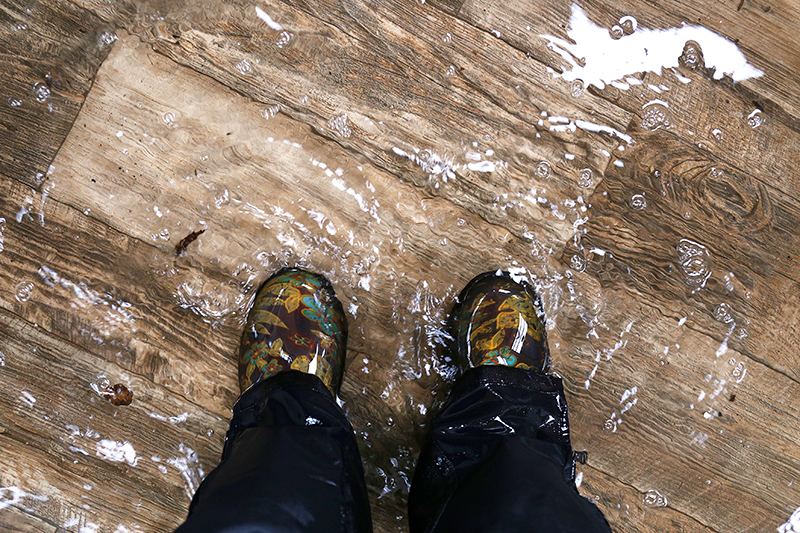When your home floods catastrophically or damage occurs over time, it affects the various parts of your home differently. Wood flooring can handle a certain amount of water, but it, like anything else can easily become damaged. In this post, we are going to talk about how water can damage wood and what to do when there is a flood on your hardwood floors.
Why Does Water Damage Wood?
Wood can be damaged by water over time or in one devastating event. It can occur due to excessive humidity, split washing machine hoses, a clogged sink, or even a leaky roof. The longer wood sits in water, the greater the chance that wood will absorb the water, become damaged, and possibly develop mold and mildew. Why? Wood is incredibly porous and absorbs moisture easily.
How to Avoid Wood Floor Water Damage
It is possible to avoid permanent damage to your wood flooring if you follow these steps. However in many cases, it is best to call a disaster response company. Even with minor watery messes, a water damage restoration company can take the stress and guesswork out of the clean up process. Keep reading to learn more about the water damage repair process and call us!
Remove Water-Soaked Objects
If water floods your hardwood floor, it is best to remove all objects that easily soak up and hold the water. Rugs and other cloth-based material will absorb and shed water until they are removed from the floor and put somewhere where they can dry.
Soak Up As Much Water As Possible
The best thing you can do is soak up as much water as you can using mops, towels, and possibly a wet vacuum. However, if the flooding is extreme enough, it may be best to call in your local water damage repair professionals.
Clean the Entire Floor Surface
You may think that your floor is out of harm’s way once it’s dry. However, you still have more to do to avoid damage. Because dirt and bacterial that are in the pores of your floor can hold water, it is best to apply a disinfectant that won’t produce suds and a brush that won’t scratch your floors to remove the debris. Once you’ve disinfected the floor, you should apply a wood cleaner that will remove and disinfect the bacteria and other germs that are still in the wood. You may need to rinse the wood surface once again and dry it.
Completely Dry Your Floor
Even if your floor looks like it is dry, you will still need to apply more care to make sure it is completely dry. Use a humidifier, fans and open the doors of your home (unless it is raining outside). However, industrial grade fans and equipment work best for drying your space after a flood. Once the area has been dried, your floor may be in need of sanding due to the “cupping” or warping of your floor’s wood planks and refinished.
Are You The Victim of Water Damage?
If you’ve recently been a victim of a flood or water damage, call your local water damage repair experts. We are a local water damage restoration company who offers both effective and compassionate services. We offer comprehensive services allowing us to be your one-stop-shop for all of your restoration needs after a disaster. We offer mold testing and mold remediation in addition to our water damage services. Visit our website to learn more about us and what we can offer.

